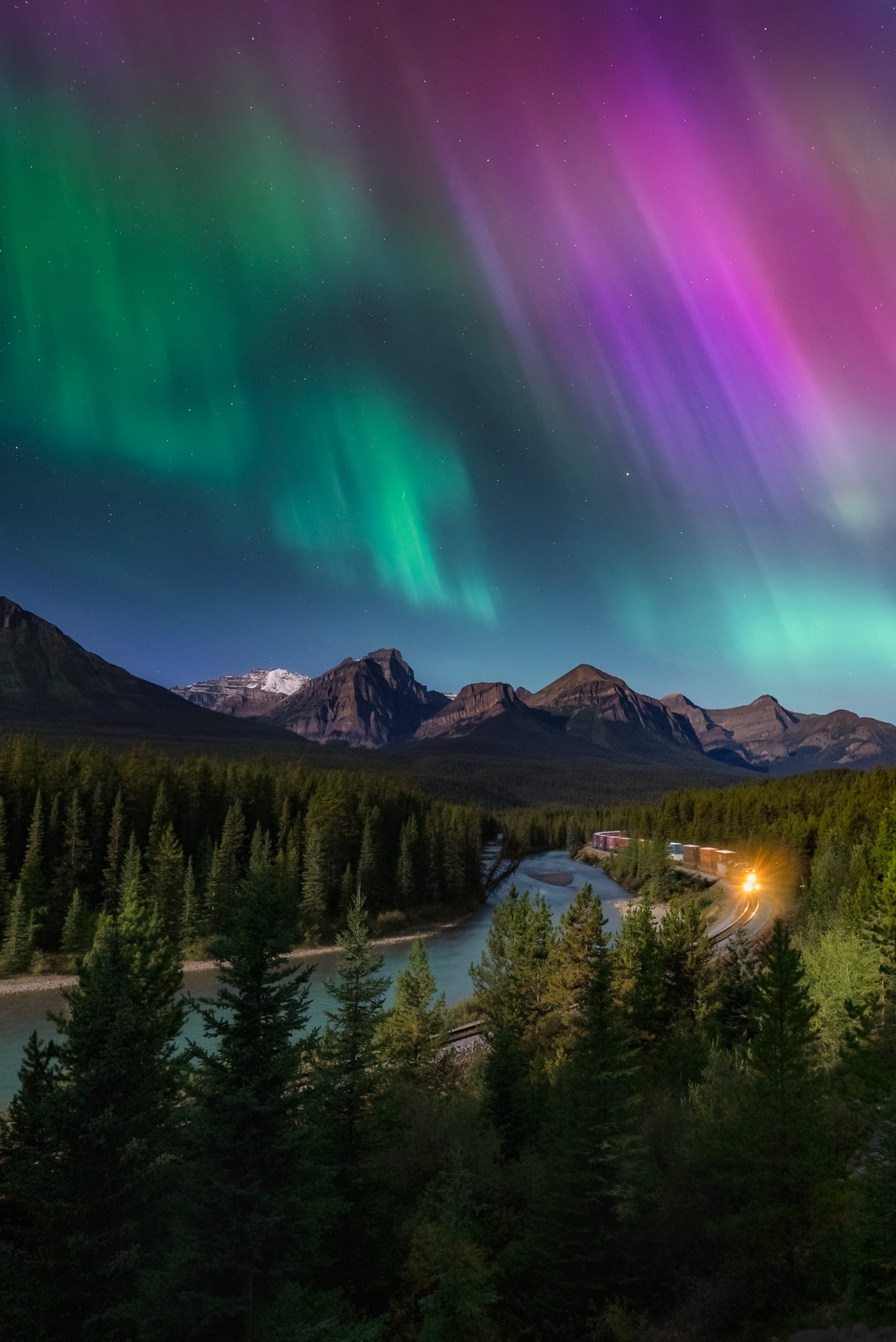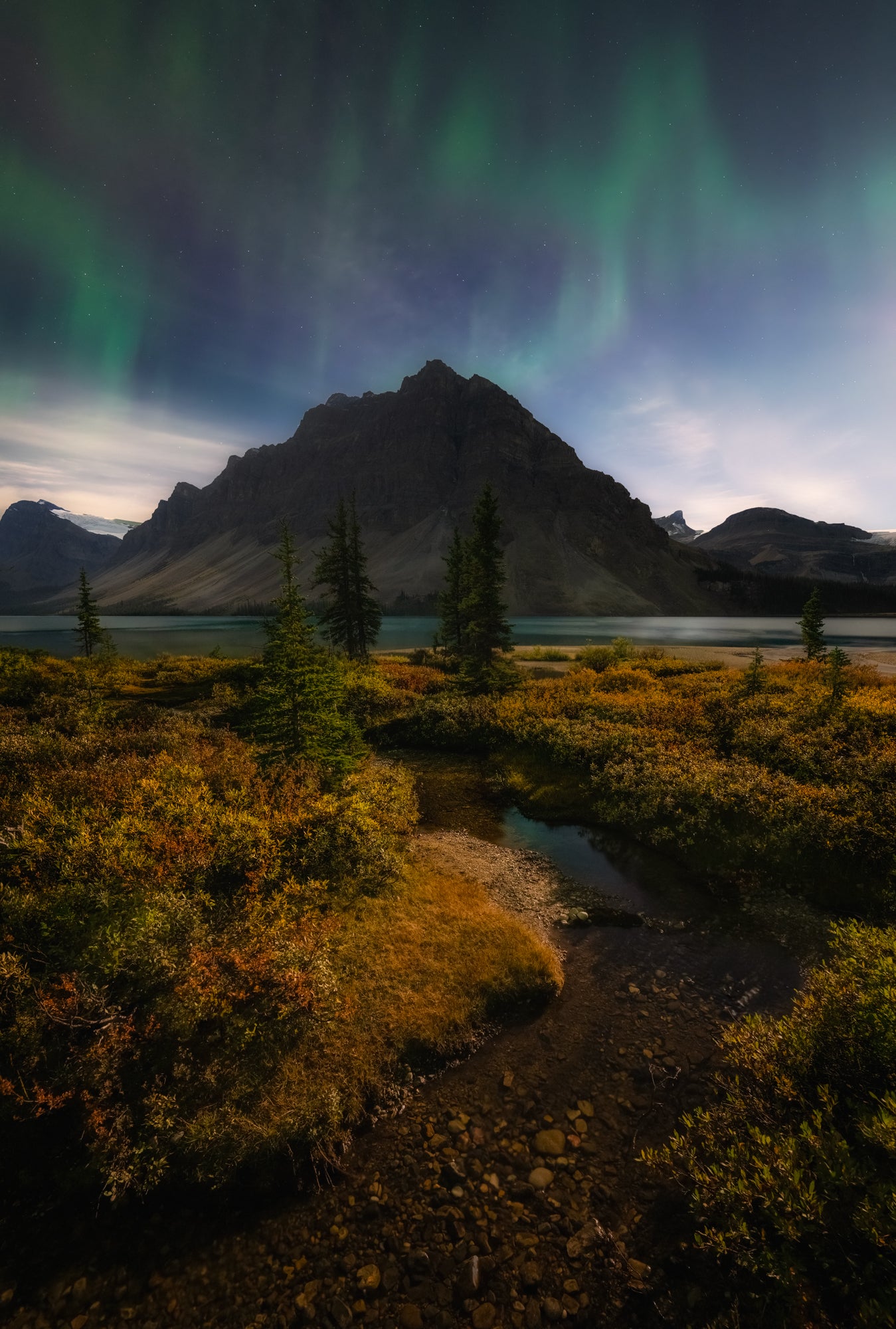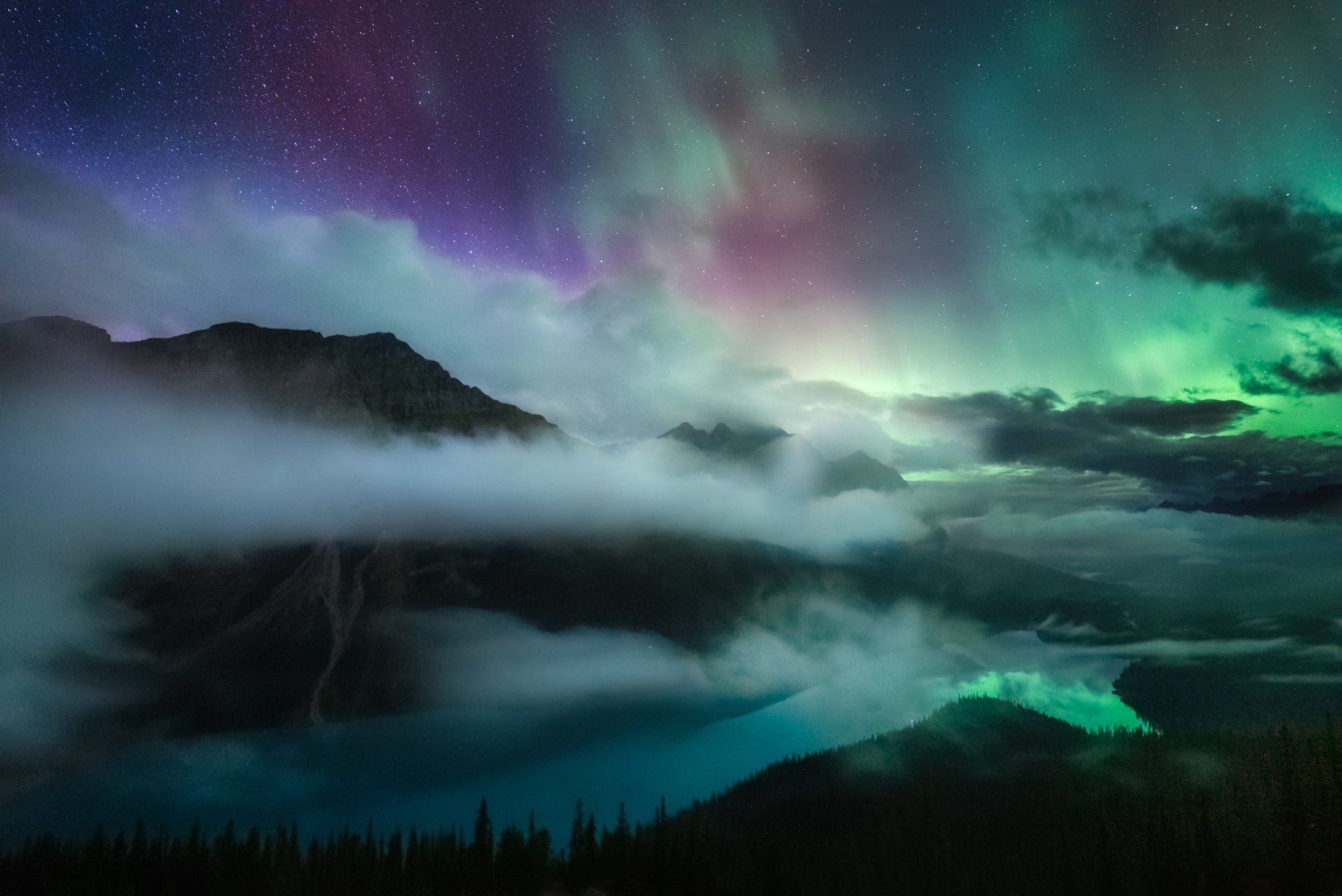Rachel Jones Ross (@rachel_jones_ross) is an avid stargazer, explorer and traveler. “My photography has always been deeply inspired by the night sky and the stories it tells,” Sony Alpha Ambassador explains. “I utilize and teach a series of techniques to capture starry landscape images, turning the smallest hints of light into detailed scenes of our place on earth.” It's been quite the year for the northern lights, with large geomagnetic storms making them more visible to more people. Rachel is an absolute pro at capturing the dazzling dance of the auroras, and we connected with her to learn more about the gear she uses to do so. Keep reading as she shares the different setups she’s used to photograph the northern lights, and get more aurora resources in our recent articles: Aurora Watch, 2024, and the updated We’re Back On Aurora Watch, 2024.
Product Preview – In This Article You’ll Find:
–Sony Alpha 1
–Sony Alpha 7S III
–Sony 16-35mm f/2.8 G Master II
–Sony 12-24mm f/2.8 G Master
–Sony 14mm f/1.8 G Master
–Sony 24mm f/1.4 G Master
Peyto Lake Aurora And Fog: Sony Alpha 7S III & Sony 12-24mm f/2.8 G Master
Photo by Rachel Jones Ross. Sony Alpha 7S III. Sony 12-24mm f/2.8 G Master.
I have been shooting on Sony cameras for eight years. In that time, I have worked with the entire Sony alpha line-up of cameras, and I can say without reservation that Sony cameras are the best low light cameras on the market, hands down.
If you are new to Sony, you may not recognize the differences between the designations Alpha 7R vs Alpha 7S, or just Alpha 7, and Alpha 9 vs Alpha 1. Generally speaking, the ‘R’ line is for Resolution (higher megapixels), S is for Sensitivity to light and the Alpha 7 is in between the R and S line in terms of resolution. The Alpha 9 is a fast, high speed pro sports camera that can shoot 120 fps, and finally, Sony Alpha 1 is the flagship camera of the Alpha line up that boasts both high resolution and speed in one body.
On any given adventure into the dark of night, I carry two Sony cameras with me, the Sony Alpha 7S III, and the Sony Alpha 1. As you will see from my images, I can get amazingly clean shots with both.
When I shoot a night sky, I always shoot the foreground separately from the sky because the landscape needs longer exposures than the stars. There are many techniques that I employ to reduce noise in starry images, but with aurora I cannot use techniques like stacking for noise reduction because the lights are usually moving too fast to retain the shape of the aurora if several images are stacked together. The bottom line: most aurora shots are a single exposure of the sky, and typically a VERY short shutter speed (between 1-6 seconds).
On September 17, an x-class flare fired a coronal mass ejection (CME) toward earth, resulting in a G4 (kp 8) auroral storm during a nearly full moon. When there is a big forecast on the horizon, I like to shoot locations in the southern skies that don’t typically see the northern lights, like this view of Crowfoot Mountain at Bow Lake. That night I managed to get aurora in two very unusual locations.
This first location, Morant’s Curve near Lake Louise, has sat in the back of my head as a potential aurora location every time I take a group to photograph it in the daytime. Never in my wildest imagination did I think it would look like this!
Morant’s Curve Aurora: Sony Alpha 7S III & Sony 16-35mm f/2.8 G Master II

Photo by Rachel Jones Ross. Sony Alpha 7S III. Sony 16-35mm f/2.8 G Master II.
My initial plan when I left home that night was to set up the Sony Alpha 7S III in timelapse mode and have my daughter, Brooke, watch it while I drove to the next location to set up camera number two. The Sony Alpha 7S III is a low light monster. With only 12.1 megapixels, and Sony’s legendary full frame backside-illuminated Exmor R CMOS sensor, this camera can shoot in any low light conditions. It is my camera of choice for video or timelapse, or anything creative at night. Because it is so light sensitive, I can use shorter exposures with less noise.
Typically, I pair my Sony 12-24mm f/2.8 G Master with the Sony Alpha 7S III. This is a dream lens for photographing grand vistas like the Canadian Rockies. It’s also an incredibly sharp lens with no coma in the corners, making it a dream lens for aurora chasers. This night, however, I needed a longer focal length to pull in the distant peaks at Morant’s curve.
For this image, I used the Sony 16-35mm f/2.8 G Master II. Theis recently redesigned lens is also super sharp in the corners, is lightweight, and has a bit more reach than my Sony 12-24mm f/2.8 G Master. It’s a great lens for traveling and my favorite wide angle when I visit places like Norway.
The Sony 16-35mm f/2.8 G Master II was the perfect choice for this moonlit scene. The moonlight on the peaks and moonbeams dancing among the evergreens absolutely took my breath away! And I caught the train (WYKYK)!
After an hour or so of spellbinding aurora, the Bz flipped North, and the aurora went quiet. In hopes of a change in polarity and return of the northern lights, I drove out to Bow Lake. My favorite view of Crowfoot Mountain is along the lake shore looking toward the horizon to the southeast. But when I arrived the aurora was still quiet, and the moonlight was too bright on the lake, so I moved into the foliage along one of the little streams feeding into the lake and set up my Sony Alpha 1.
Everything you’ve ever loved in a Sony is wrapped up in the Sony Alpha 1. Every time Sony comes out with a new camera body, I can’t help but think “this is more than I ever thought possible.” Then Sony released the Sony Alpha 1. This camera is a hybrid of the high-resolution R line, with the speed of the Sony Alpha 9, and more light sensitivity for shooting in low light than should be possible with a 50.1 megapixel sensor. I use this camera for everything, including wildlife photography, landscapes, Milky Way, and on this night the aurora borealis.
Bow Lake Aurora & Moonlight in Autumn: Sony Alpha 1 & Sony 14mm f/1.8 G Master

Photo by Rachel Jones Ross. Sony Alpha 1. Sony 14mm f/1.8 G Master.
The moonlight made the foliage glow, and I was able to focus stack the foreground at f/8, for 30 seconds at ISO 3200 using autofocus(!!) on the Sony Alpha 1 paired with the Sony 14mm f/1.8 G Master! I love this combination of camera and lens. On darker nights I can open the aperture to f/1.8 while still retaining super sharp stars from corner to corner, with zero coma. The Sony 14mm f/1.8 G Master is always in my bag. I own two of these lenses – one for each camera… It’s just that good.
The soft aurora and wispy moonlit clouds felt like the perfect complement to the warm glow of the foliage. When I saw this image on the back of my camera, I did not feel the need to wait or hope for the aurora to get stronger or more vibrant; I could see the pieces of the image knit together in my mind with this single image of the sky and the focus-stacked foreground.
With an hour left of the night, my daughter had met up with me to return my Sony Alpha 7S III. I packed up my gear and rushed out to Peyto Lake, just a few kilometers away.
From my vantage point, I was looking toward the northern horizon when the sky absolutely erupted for the second time that night.
Peyto Lake Aurora Reflection: Sony Alpha 1 & Sony 24mm f/1.4 G Master

Photo by Rachel Jones Ross. Sony Alpha 1. Sony 24mm f/1.4 G Master.
At this location I set up the Sony Alpha 7S III with the Sony 12-24mm f/2.8 G Master to shoot timelapse, and the Sony Alpha 1 paired with what is perhaps Sony’s sharpest, and fastest lens, the Sony 24mm f/1.4 G Master. I like shooting a bit tighter at this location to get a tighter view of the lake, but I set up the second camera as a wide shot just in case the best parts of the aurora happened high in the sky. The Sony 24mm f/1.4 G Master turned out to be a fantastic choice as the aurora danced in the gap between the mountains. If you look closely, you can see the detail in the trees as the setting moon once again illuminated the foreground.
If you are hoping to capture the aurora, September and March (vernal and autumnal equinox) are the most geo-effective months of the year, owing to the angle of the earth in relation to the sun. In addition, the next year or so will likely offer the best chances to see the aurora both in frequency and size of auroral storms as we approach solar maximum of the current solar cycle. It is an exciting time to chase the aurora!
For more information on aurora chasing, gear questions, or to sign up for an aurora chasing workshop in the Canadian Rockies or Norway with Rachel Jones Ross, visit astralisphotography.com.










